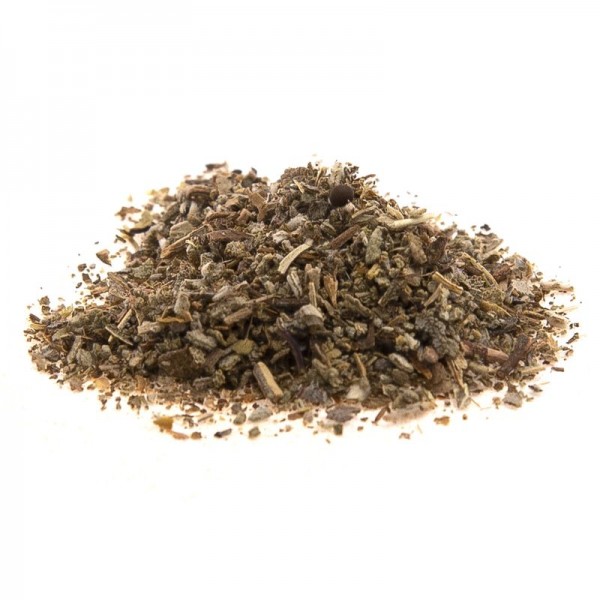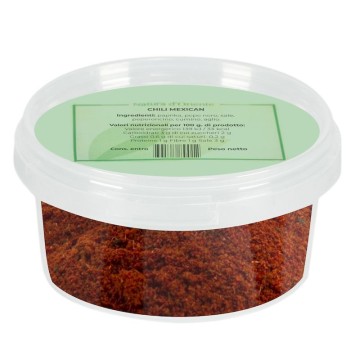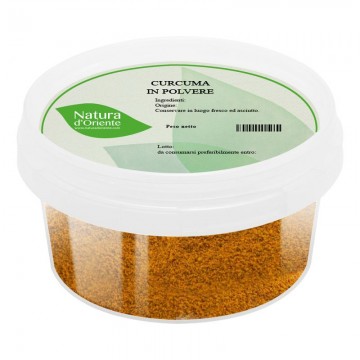Dried sage, an intense traditional aroma
Sage is an aromatic herb known in various cuisines around the world, appreciated for its strong aroma and its earthy, pungent flavor with bitter notes. It is very common in Mediterranean cuisine, the area of origin of this plant, where it has been used for centuries to season first courses, meat second courses, side dishes, and to flavor butter and oil. It blends well with other herbs from the same mint family (oregano, rosemary, basil and thyme) to add a complex flavour to many dishes.
What are the beneficial properties of sage?
As an aromatic and medicinal plant, sage was already associated with well-being in past centuries with its name, which derives from the Latin "salvus" meaning healthy. Its undisputed virtues are still used today in herbal medicine as a natural remedy to improve various functions of our body. In terms of nutrients, we know that sage contains valuable nutrients, in particular vitamin K, useful for bone health. It provides various antioxidants that can aid digestion, oral health and the upper respiratory tract. Regarding the digestive function, sage promotes the assimilation of food and the elimination of intestinal gas; stimulates gastric secretions and increases digestive capacity – especially for fatty foods, meats and fish. A sage infusion combats stomach ache, useful in combination with a few drops of lemon, and can relieve diarrhea discomfort.
Among the beneficial properties of sage are those useful to the female world, since its properties allow to alleviate the symptoms of painful menstruation and the typical disorders of menopause, such as hot flashes, since it facilitates the regularity of the sweating process. It has antioxidant properties, thanks to its compounds that make it a tonic food. Sage is considered useful to naturally combat physical and mental fatigue with its nutritional substances. It contains rutin, and chlorogenic, caffeic, rosmarinic and ellagic acids; all substances that bring well-being to brain function and memory. It is rich in compounds that facilitate good mood and calm, useful to combat stress. Sage tea can be useful for the well-being of the nose and throat, and to improve conditions affecting the oral cavity. For the upper respiratory tract, you can use this natural solution in case of nasal congestion, mild cough and sore throat. The balsamic action of sage comes from both the consumption of the infusion and the inhalation of vapors during and after the infusion.
As for contraindications, sage is generally safe, but it is necessary not to overdo its consumption. Its action, in high doses, can interfere with some hormones and have negative effects on the menstrual cycle, in case of pregnancy and breastfeeding. Furthermore, it contains substances such as ketones and thujones that can have neurotoxic effects if taken in high quantities.
How to buy our dried sage?
You can find this version of sage leaves on Natura d'Oriente, in loose form and at a convenient price. We offer a product selected for quality, ready to flavor your dishes and fillings. You can buy sage leaves at variable weights of 40g, 75g, 150g, 250g and 500g. Our sales and delivery services reserve you a convenient price for dried sage and other loose spices.
Dried sage leaves in cooking
In the Italian and Mediterranean tradition, this aromatic herb is used for its intense and particular flavor. It is available in different forms including the dried leaves version, which maintain the penetrating aroma for a long time. Sage can be used in various ways, incorporated into doughs and fillings in particular, to flavor first or second courses of meat and fish.
Tips for using sage in recipes
Sage leaves have a strong aromatic and earthy flavor, and a scent similar to that of camphor. For this reason, it is best to use them sparingly in dishes: small quantities are enough to signal its presence. Sage can be sprinkled as a final garnish on dishes, or added during cooking. This version of dried sage leaves is often preferred because it can be easily ground or rubbed on meats.
Savory recipes: dried sage can be sprinkled on soups, to add flavoursoups and stews. It is often used in vegetarian cooking to add flavour to vegetables, greens, pumpkins and legumes – as in cannellini beans all’uccelletto. It can give a more consistent tone to mashed potatoes. It flavours omelettes and other egg-based preparations, while the leaves are used in frying batter. It can be used in the dried version for the dough of baked products such as bread, focaccia, breadsticks and taralli.
First courses: it is famous as an aromatic herb for the fillings of ravioli, tortelli and tortelloni in the butter and sage recipe.
Meat and fish: excellent aromatic herb to mix in the filling of roasts and in roulades, appreciated in dishes based on veal, game and white meat (chicken, pork, turkey, etc.). It is also used as a flavouring in the preparation of cured meats and porchetta. It is successfully used in stews, in the recipe for saltimbocca alla romana and the preparation of liver with butter and sage. In Italian cuisine it is also used to season some fish recipes such as perch, salmon, sole or cod au gratin.
Sauces: you can combine the chopped leaves with butter to prepare sage butter, or incorporate them into tomato sauces and gravies. Dried sage is excellent for flavoring cheeses, oils and sauces for meat and fish. For those who want to include it in marinades, a small amount can be used in combination with oil and lemon to flavor meats intended for the grill or barbecue.
Blends: since it belongs to the mint family, it mixes well with other similar herbs such as oregano, rosemary, basil and thyme.
Herbal tea: can be used to create a beneficial infusion, adding 1 teaspoon of dried sage and leaving to infuse for about 8-10 minutes.
The Recipe: Beef fillets with aromatic herbs
Ingredients:
4 beef fillets - 8 slices of bacon - Hawaiian red salt (Alaea Red) to taste - 2 teaspoons of dried sage - 1 teaspoon of rosemary - 1/2 teaspoon of garlic - 2 teaspoons of crushed bay leaves - extra virgin olive oil
Preparation
Put the rosemary, crushed bay leaves, sage and garlic in the mortar and crush the aromatic herbs. Spread the chopped herbs on the fillets, cover them with cling film and leave them to marinate for 30 minutes. Once the marinating time is up, wrap the meat with the slices of bacon - two for each fillet. Tie the fillets with kitchen string and brush them with oil, without exaggerating the quantity. Place the fillets on the grill and cook over a very high flame, turning them to even out the cooking. Wait until they have reached the desired doneness, remove them from the grill and season them with the red Hawaiian salt. They are ready to be served!
Origin and history of sage
Common sage has the botanical name of Salvia officinalis. It is a small evergreen shrub, native to the Mediterranean region and part of the Lamiaceae family. This plant is present in many varieties, about 250 different genera and almost 7000 species spread throughout the world. The plants show an average height of around 50 cm and differ according to different types. The most well-known sage in terms of food is Salvia Officinalis, but there are also Salvia latifolia with broad and long leaves, Salvia lavandulifolia with narrower leaves and a more intense aroma, and Salvia crispa with curled leaves. Sage leaves are very fragrant with particular spicy notes thanks to the strong presence of aromatic substances. For this reason they are used as a seasoning in cooking, for perfumery and cosmetic extracts, as a source of aroma in liqueurs. This aromatic herb can be used both fresh and dried, since the leaves maintain their fragrance for a long time. Its history dates back to ancient times, when sage was appreciated as a natural cure-all, a true panacea. As such, it was still considered in the Middle Ages, among the most effective medicinal plants that at the time provided food preservation, purification, digestive and calming functions. According to tradition, sage infusion was used to treat excessive sweating or against nervous exhaustion. It was rubbed fresh to disinfect wounds or to whiten teeth. Its use was multiple, and the verb "salviare" meant its prescription. It was also called "sacred herb", because it was considered a powerful male aphrodisiac, capable of increasing female fertility and protecting pregnancies. Even at the end of the twentieth century, sage was recognized as having aphrodisiac properties, explained by the presence of phytoestrogens. Since it was administeredta with food, since the Middle Ages it became a condiment appreciated also from the point of view of taste, and over time it became part of many recipes for first courses, second courses and side dishes.









 No reward points for this product.
No reward points for this product.















